"Studies show that over 30% of urban trees experience stress-related decline during summer months—proper summer tree care is vital for lasting tree health."
What You’ll Learn: In this guide, you’ll unlock the secrets to effective summer tree care , from spotting early signs of stress to watering and mulching like a pro. Whether you’re a weekend gardener or a seasoned plant lover, master the best tree care tips for a lush and resilient landscape all season long.
Mastering Summer Tree Care: Your Guide to Trees’ Health and Resilience
- Explore practical summer tree care tips that shield trees from heat stress and environmental challenges
- Learn proven strategies for maintaining trees healthy despite seasonal adversity
Summer tree care is about more than just watering when things get hot—it’s a comprehensive approach to ensure your trees survive and thrive even in stressful conditions. The summer months can be challenging for even the healthiest trees, with heat, dry spells, and pests threatening their vitality. Taking action now with the right tree care tips will help avoid costly damage and keep your yard looking vibrant.
From preventing heat stress to nurturing tree roots , summer is the perfect time to shape your yard’s future. Through this article, you’ll absorb the essentials of soil test , effective watering, mulching, and how to combat pests and diseases—expert knowledge you can use for a robust yard year after year.
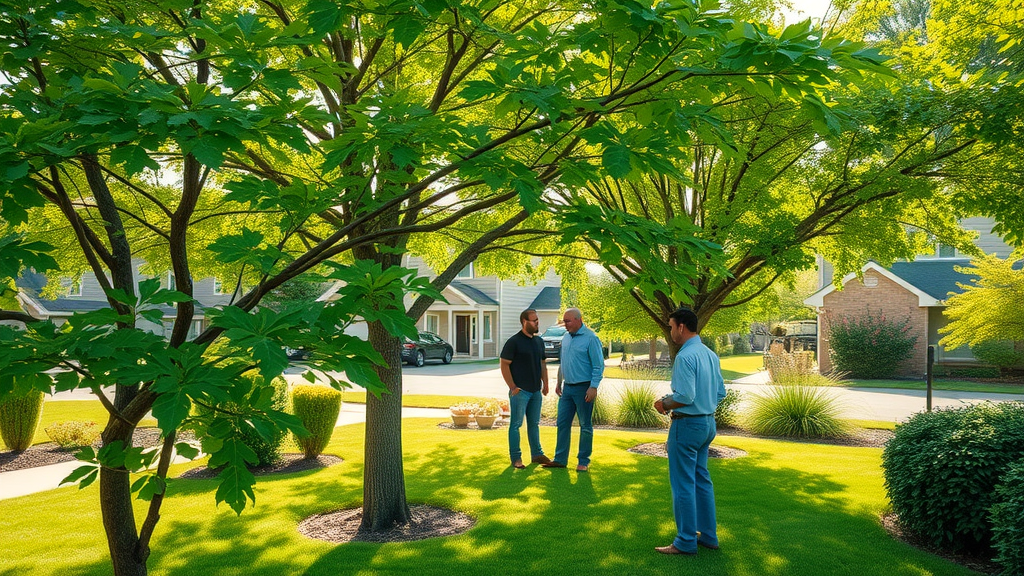
How Summer Tree Care Impacts Long-Term Trees’ Health
Understanding Trees in the Summer: Unique Challenges and Opportunities
The summer months test even the toughest trees. Prolonged heat, sudden thunderstorms, and unpredictable droughts can cause dead branches and increased vulnerability to pests. However, summer is also a period of explosive root growth and foliage development. By recognizing seasonal challenges, you can adapt tree care methods for maximum resilience. Trees in the summer benefit from extra water retention, protection against sun damage, and proactive health checks.
The possibility of storm damage is higher during hot weather, especially after a dry spell. A strong, well-tended tree rebounds faster from high winds and other incidents. Smart tree care tips during summer not only keep your trees healthy now—they lay the foundation for decades-long health, reducing maintenance costs and boosting your property’s appeal.
The Science Behind Trees’ Health During Hot Weather
Trees are sophisticated organisms reacting to every environmental signal. When exposed to high temperatures, their tissues lose water more quickly, leading to symptoms such as wilting leaves , brown edges , and premature leaf drop . This makes proper summer tree care vital. Techniques like mulching, deep watering, and soil testing help trees optimize water use, minimize heat absorption, and acquire key nutrients necessary for robust growth.
It’s important to realize that tree stress in summer can remain hidden until it becomes severe. By the time you notice colored leaves or thinning canopies, there may already be underlying root damage or depletion of essential nutrients. Regular care, including checking the base of the tree for changes in bark texture and soil, will catch issues before they threaten trees health .
| Common Signs of Tree Stress in Summer | Possible Cause | Recommended Summer Tree Care Tip |
|---|---|---|
| Wilting Leaves | Heat Stress/Lack of Water | Increase Mulching & Deep Watering |
| Brown Edges | Overexposure to Sun | Provide Shade, Adjust Watering |
| Leaf Drop | Soil Compaction | Soil Aeration and Organic Mulch |
Essential Summer Tree Care Tips for Every Homeowner
Inspect Your Trees Regularly for Early Signs of Stress
Early detection is one of the most valuable tree care tips you can implement. By routinely inspecting your trees, you can spot signs of heat stress , pests and diseases , and nutrient deficiencies before they escalate. Look for issues such as wilting leaves , unexpected leaf drop , changes in bark texture, and presence of insects. Focus especially on newly planted or young trees, as these are more vulnerable to summer extremes.
Walk around your yard at least once a week to inspect your trees . Pay attention to the base of the tree for soft spots or fungal growth, and assess canopy density for thinning areas that could indicate internal issues. Keeping a photo log can help you track subtle changes in foliage color or growth patterns. These simple steps will ensure your trees healthy throughout the summer months.
Soil Test: Foundation of Effective Summer Tree Care
Healthy trees start with healthy soil. Conducting a thorough soil test reveals vital information: pH levels, nutrient availability, and possible compaction. These tests guide your fertilization and watering schedule, addressing deficiencies before symptoms appear. A soil test can also pinpoint areas with poor drainage or excessive clay, which can exacerbate issues during the hot season.
Most local extension offices offer affordable soil test kits, or you can hire a certified arborist for in-depth analysis. After testing, amend your soil by adding compost, organic mulch, or specific nutrients as needed. This will support healthy root growth and better drought resistance, forming the backbone of strong summer tree care.
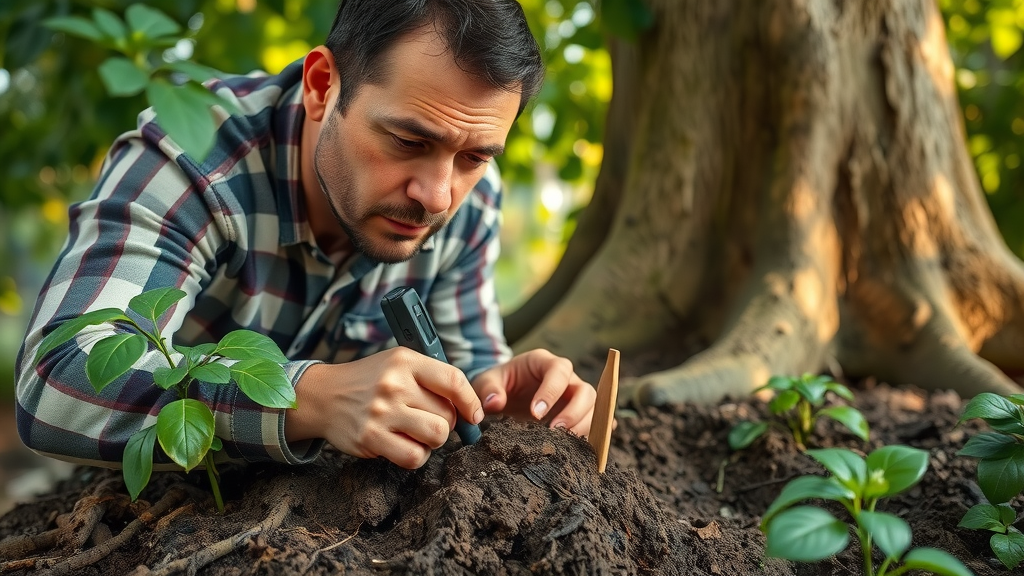
Proper Watering Techniques to Keep Trees Healthy All Summer
One of the most important aspects of summer tree care is watering correctly. The best time to water is early morning when evaporation is low, allowing water to reach deeper tree roots efficiently. Deep and slow irrigation methods, such as using a soaker hose , prevent surface runoff and encourage roots to grow downward, making them more resilient to drought.
- Best watering times: Early morning (before 9 am) or late evening—avoid midday heat to retain moisture and reduce evaporation risks.
- Deep & slow irrigation: Set a soaker hose at the base of the tree or use a drip system to ensure water penetrates at least 8-12 inches into the soil.
- Drought considerations: In times of drought, add mulch and reduce mowing around trees to prevent water loss both at the soil surface and the base of the tree .
Remember, frequent shallow watering can do more harm than good, promoting shallow root systems that are prone to heat stress . For newly planted trees, increase watering during the first two seasons, as their roots are less established.
Mulch for Maximum Moisture Retention and Root Protection
Mulching is an essential step in summer tree care—it shields roots from heat, helps retain moisture , and prevents weed competition. Apply 2-4 inches of organic mulch, such as shredded bark or wood chips, around the base of the tree , but keep mulch a few inches from the trunk to avoid rot.
Not only does mulch insulate tree roots from temperature extremes, but as it breaks down, it adds organic matter to the soil, supporting healthy root growth . Refresh mulch annually and monitor for signs of mold or fungus, which indicate excessive buildup or insufficient airflow.
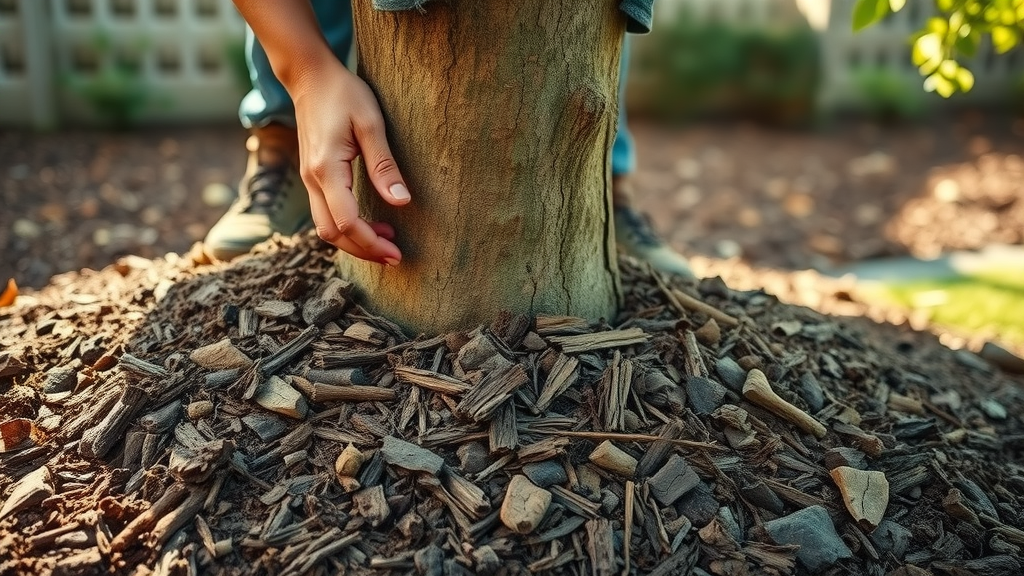
Fertilization Facts: Supporting Trees’ Health Through Summer
Fertilization keeps trees healthy by supplying essential nutrients that may be lacking after heavy spring flushes or exposure to high summer sun. For maximum benefit, fertilize after a thorough soil test and only use slow-release or organic options to avoid burning tree roots or promoting weak, fast growth susceptible to storm damage.
For mature trees, avoid late-season fertilization which can stimulate tender new growth unable to withstand the upcoming cooler months. When in doubt, consult a certified arborist to ensure your fertilization plan aligns with overall summer tree care strategies.
Tree Care Tips to Combat Heat Stress
Identifying and Preventing Heat Stress in Summer Tree Care
Recognizing the early warning signs of heat stress —such as limp or curling leaves, browning edges, and leaf scorch—empowers you to act quickly before significant damage occurs. The best tree care tips for prevention include mulching, deep watering, and creating shade through groundcovers or artificial barriers.
Monitor your trees daily during heatwaves, paying particular attention to young or newly transplanted specimens. Implement additional watering or install temporary shade during multi-day hot spells. Remember, “Even a single extreme heatwave can set tree growth back for years without proper care tips applied.”
Creating Shade: Physical Barriers and Strategic Planting
If you notice persistent heat stress , consider adding physical barriers such as shade cloths or temporary fencing, especially for saplings and heat-sensitive species. Strategic planting—such as utilizing taller shrubs, hedges, or positioning trees near structures—also provides year-round relief from harsh sun.
These methods not only help preserve the current season’s growth but also protect from sudden temperature spikes. By designing your landscape with shade in mind, you’ll naturally reduce water use and create a more comfortable, sustainable backyard ecosystem.
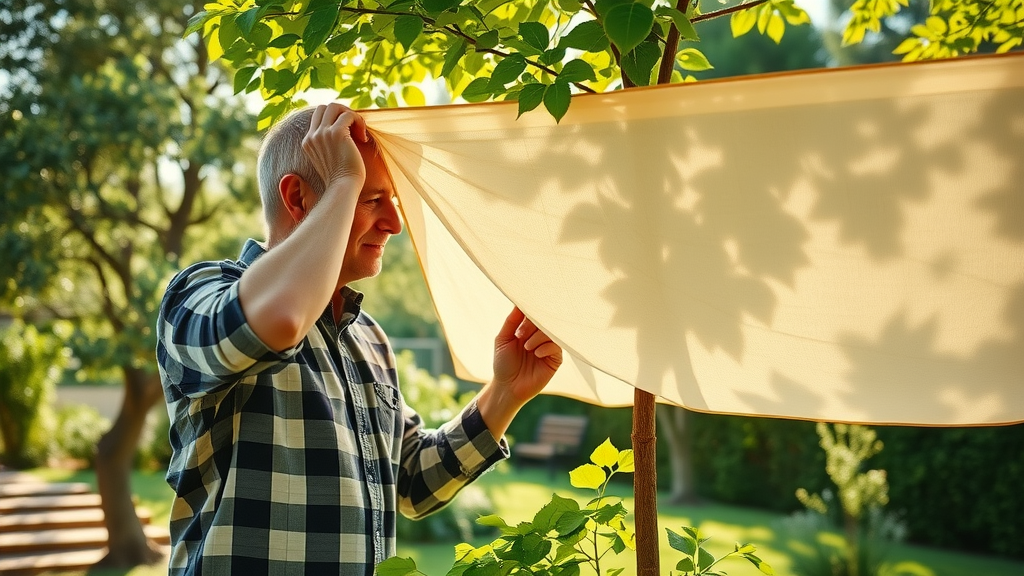
Defending Trees in the Summer: Pests, Diseases, and Threats
Monitoring for Pests and Diseases Throughout the Season
Summer is prime time for pests and diseases . Beetles, borers, aphids, and fungal pathogens can quickly damage trees health if unchecked. By establishing a regular inspection routine—examining trunks, leaves, and the base of the tree for holes, sap, or odd growths—you’ll spot trouble early.
- Aphids: Sticky residue and distorted new growth
- Borers and beetles: Tiny exit holes or sawdust at base
- Leaf spots and blights: Brown or black spots, yellowing leaves
- Caterpillars: Webbing or chew marks on foliage
If you find evidence of pests or disease, promptly consult a certified arborist for targeted remedies that won’t harm beneficial pollinators or natural predators crucial for your yard’s sustainability.
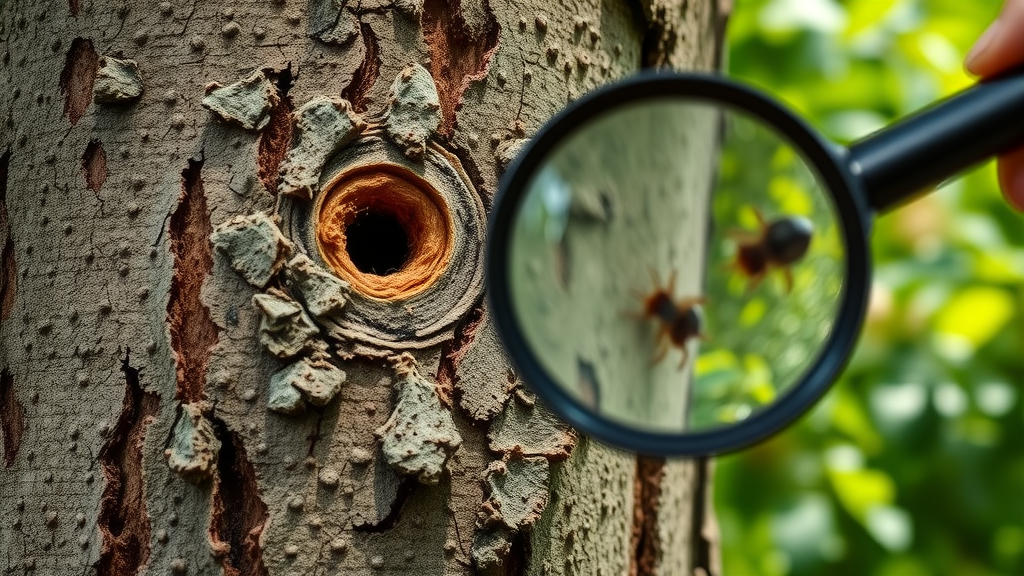
Tree Pruning and Maintenance: Tree Care Tips for Summer Growth
When and How to Prune Trees in the Summer for Maximum Health
Summer pruning requires a delicate touch. The perfect time to prune is right after spring’s growth and before peak summer heat sets in, ideally when trees are less stressed. Focus on removing dead branches , crossing limbs, or any growth that obstructs sunlight or airflow through the canopy.
Always use sanitized, sharp tools to limit the chance of spreading diseases. When in doubt, consult a certified arborist —improper pruning can do more harm than good, stalling root growth and allowing pests to invade fresh wounds.
Common Mistakes Homeowners Make During Summer Tree Care
The eagerness to improve your yard can sometimes backfire. Overwatering, excessive fertilization, and “topping” (improper cutting of large branches) are frequent missteps that cause long-term harm. Applying mulch too close to the trunk restricts airflow and promotes rot, while failure to regularly inspect your trees means hidden issues can worsen.
Another pitfall is ignoring the need for professional help for large or dangerous trees—DIY efforts near power lines or for major structural pruning put you and your trees at risk. Instead, lean on the expertise of a trusted professional tree service or certified arborists .
Summer Tree Care Tips for Young, Mature, and Special Trees
Tailoring Care Tips for Newly Planted Trees
Newly planted trees require vigilant summer care. Water them two to three times weekly, ensuring the soil is consistently moist but not waterlogged. Apply mulch generously, but never pile it directly against the trunk. Shield saplings from the harshest midday sun by using stakes with shade cloth or leveraging existing foliage for temporary cover.
Regular soil test and adjusting for deficiencies support healthy root growth and speedy establishment. Remove any tags or bindings from the trunk to prevent girdling and closely observe for any changes in leaf color or vigor.
Supporting Mature Trees Facing Seasonal Stress
Mature trees are usually more resilient but still vulnerable to cumulative effects of drought, pests, and soil compaction. Maintain a consistent deep watering routine, focus on mulching, and minimize construction or foot traffic around the base of the tree to encourage healthy roots. For larger trees, cabling or bracing may be necessary if you notice leaning or splitting limbs after storms.
Schedule an annual check with a certified arborist or professional tree service to diagnose and treat issues early. Proactive intervention ensures established specimens remain landscape focal points for years to come.
Caring for Flowering and Fruit Trees During Hot Months
Flowering and fruit trees are especially sensitive to summer tree care protocols. Consistent irrigation is crucial during flowering and fruit set. Mulch deeply to avoid soil drying and apply a light, slow-release fertilizer following soil test recommendations. Thin fruit if overabundance causes branch strain and remove diseased wood promptly to protect next year’s growth.
Monitor for pests like fruit flies and leaf spot fungi, employing natural deterrents or approved treatments. This attention to detail guarantees a quality harvest and vibrant blossoms season after season.
People Also Ask: Trees Health and Summer Tree Care
How can you care for your trees in June and July?
In June and July, prioritize watering trees early in the morning, mulch around the base to retain soil moisture, inspect for signs of pests and diseases, and perform a soil test to adjust fertilization. Prune only lightly to remove damaged branches and shield young trees from direct sun exposure.
Who is responsible for trees next to power lines?
Trees next to power lines are typically the responsibility of the utility company, but property owners should report hazards and never attempt pruning near lines themselves. Professional tree care services are essential for safety and compliance.
How often should you water a tree in summer?
Deeply water established trees once a week in summer, increasing frequency during droughts or heat waves. Newly planted trees may need water two to three times weekly. Soil type, tree species, and weather conditions affect exact schedules.
Why do tree leaves turn brown in summer?
Browning leaves in summer are often caused by inadequate watering, heat stress, root damage, or disease. Assess soil moisture, adjust watering, add mulch, and consult a tree care specialist if browning persists.
Frequently Asked Questions on Summer Tree Care Tips
- What is the best mulch for summer tree care? Organic mulches like shredded bark, leaf mold, or wood chips are ideal, offering excellent moisture retention and temperature moderation.
- How can I naturally discourage summer pests in my yard? Encourage beneficial insects, use neem oil or insecticidal soaps, and keep trees healthy to reduce pest issues.
- When is fertilizing most effective in summer tree care? Fertilize only after a soil test, using slow-release formulas in early summer for best results. Avoid late-season fertilization.
- Should I hire a professional for summer tree pruning? For large trees, pruning near power lines, or if unfamiliar with proper techniques, always rely on a certified arborist or professional tree service.
Level Up Your Landscaping with Professional Summer Tree Care
- Apply these expert-backed summer tree care tips for a robust, beautiful yard all season long. For personalized guidance, call 203-271-7991 or visit TreeGuardianNews.com to subscribe.
Take action this summer—inspect, water, mulch, and safeguard your trees for health that lasts all year. Grow your landscaping expertise—call 203-271-7991 or visit TreeGuardianNews.com to subscribe.
To enhance your understanding of summer tree care, consider exploring the following resources:
This article provides practical advice on replenishing mulch, pruning for strong growth, and inspecting tree health during the summer months.
This resource offers insights into proper irrigation, trimming and pruning, mulching, fertilization, and pest inspections to keep your trees healthy throughout the summer.
If you’re serious about maintaining your trees’ health during the summer, these resources will provide you with valuable information and actionable tips.
 Add Row
Add Row  Add
Add 

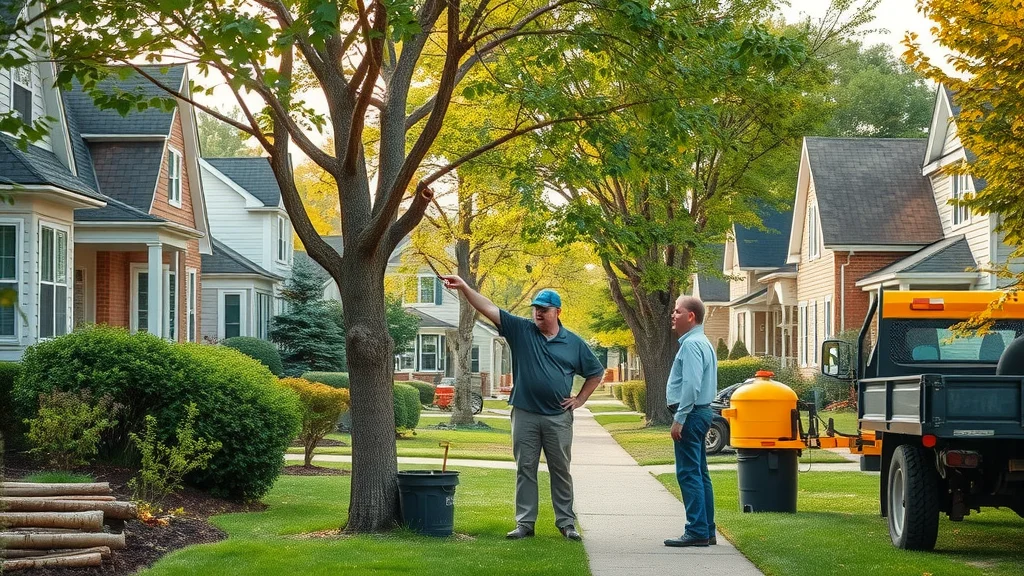
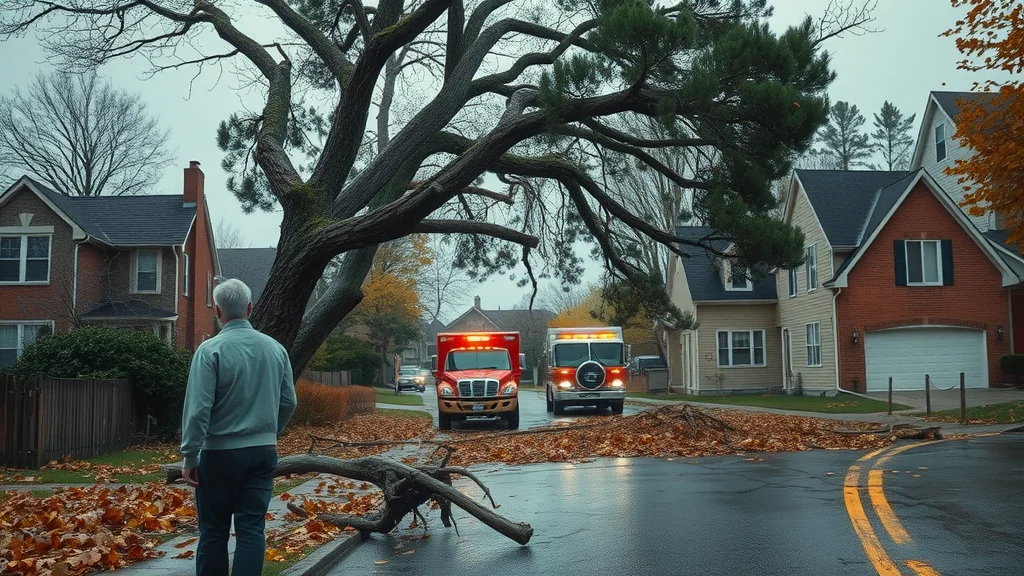
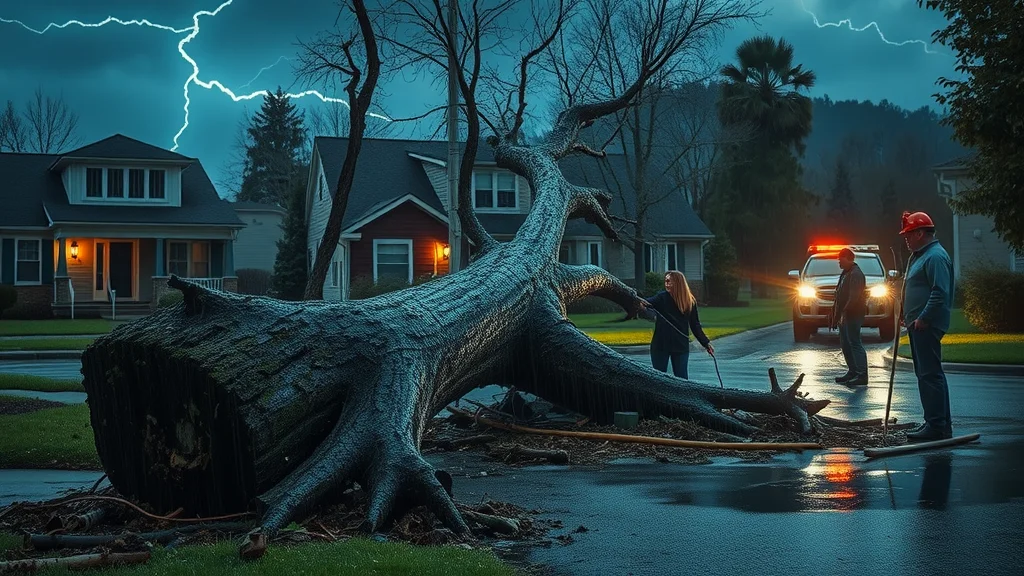
Write A Comment